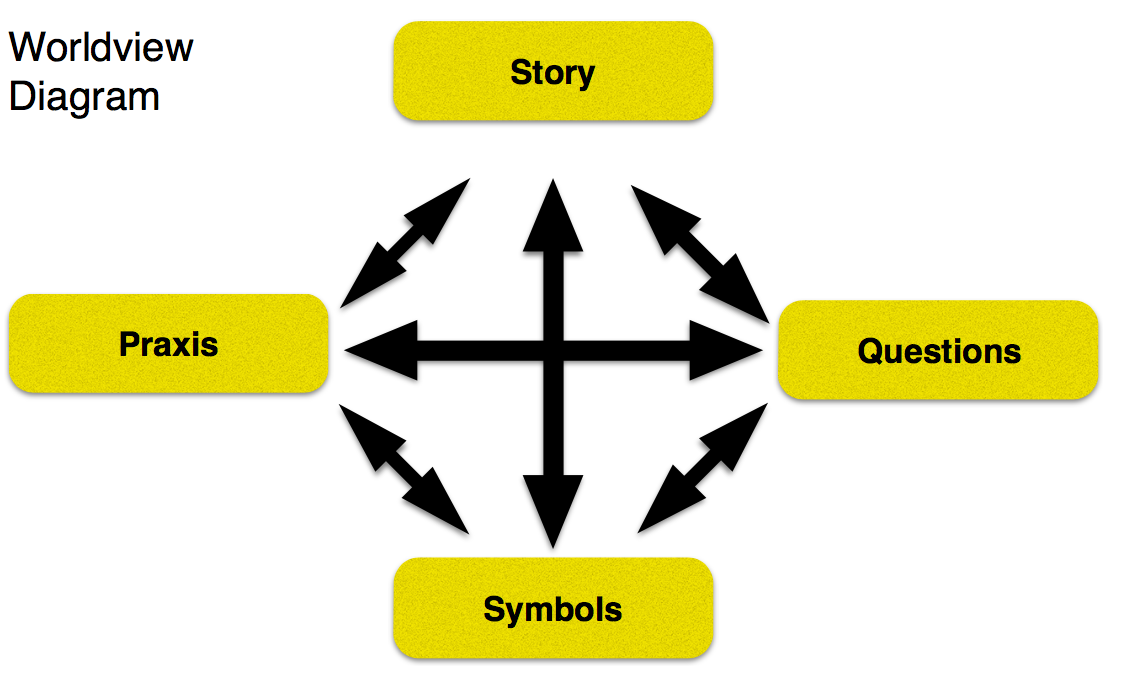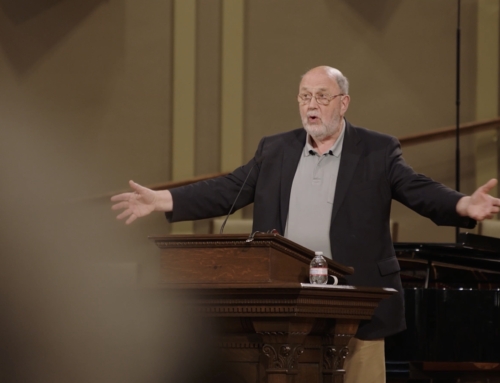As a pastor, I’m used to getting heated responses when discussing complicated issues. During one very conflicted exchange recently I suggested that my conversation partner needed to adopt a ‘love your neighbour as yourself’ attitude. The response I got was not what I was expecting, to say the least.
He wrote: ‘Your version of “love thy neighbor” is a toxic, feminine version that follows feelings, not a masculine one that goes by truth’.
I wrote back: ‘God is full of tender compassion, something we would all do well to emulate. Such tenderness and compassion is neither ‘feminine’ nor ‘masculine’. It is simply ‘godly’.’
I don’t think I was heard in the midst of that email exchange.
Talking Past Each Other
When disagreements occur, people usually talk past each other, find others who agree with their view, and then sit in their corners stewing or dispensing memes that say little of value. These actions reinforce the worldview of that person or group, allowing them to feel a little ‘safer’ and more self-assured because of the security provided by an insular worldview. Unfortunately, entrenched worldviews mean very little real communication and change is possible around issues of critical importance in any setting.
One important idea to understand here is how ‘worldview’ works. A worldview is not ‘the way we look at the world’. It is ‘the lens through which we see the world’. Most people are not aware that they are looking through the lens of ‘worldview’. But each of us has such a lens. If we are unaware of that lens, then we are hard pressed to ‘see the world as it is’. The lens has colored and distorted our view of reality.
What Changed Peter’s Worldview
We see this in the story of Peter and Cornelius in Acts 10:
In Caesarea there was a man named Cornelius, a centurion with the cohort called ‘the Italian’. 2 He was devout, and he and all his household revered God. He gave alms generously to the people, and constantly prayed to God.
He had a vision. Around three o’clock in the afternoon he saw, quite clearly, one of God’s angels coming to him.
‘Cornelius!’ said the angel.
He looked hard at him, terrified.
‘What is it, Sir?’ he said.
‘Your prayers and your alms have come to God’s notice,’ said the angel. ‘What you must do is this. Send men to Joppa, and ask for someone called Simon, surnamed Peter. He is staying with a man called Simon, a tanner, whose house is beside the sea.’
When the angel who had spoken with him went away, he called two of his household and a devout soldier from among his retinue. He explained everything to them, and sent them off to Joppa.
The next day, as they were on their journey and getting near the town, Peter went up onto the roof of the house to pray. It was around midday; he was hungry, and asked for something to eat. While they were preparing it, he fell into a trance. He saw heaven opened, and a vessel like a great sail coming down towards the earth, suspended by its four corners. In the sail there was every kind of four-footed creature, reptiles of the earth and birds of the air. Then he heard a voice:
‘Get up, Peter!’ said the voice. ‘Kill and eat!’
‘Certainly not, Master!’ said Peter. ‘I’ve never eaten anything common or unclean!’
‘What God has made clean,’ said the voice, coming now for a second time, ‘you must not regard as common.’
This all happened three times, and then suddenly the sail was whisked back up to heaven.
The story introduces us to a Gentile man named Cornelius, a middle-ranking officer, with 100 men under him, described as a ‘devout’ man who ‘revered God’. In other words, he worshiped Yahweh, but had not gone through the ritual of circumcision to identify himself as ‘fully Jewish’. He is directed to summon Peter who lived in Joppa, some 33 miles away. Peter reluctantly agrees.
The whole story shows how dedicated Peter is to his ‘worldview’, which is one of being thoroughly ‘Jewish’ as he understands it. But Peter’s vision from God ends up reforming the lens through which he sees his ‘Jewish’ world. This in turn changes his attitude and actions around the ‘pagans’. Before, the Gentiles were not to be interacted with unless absolutely necessary. After, Peter eats with Cornelius. As Prof. Wright puts it in his Acts for Everyone commentary:
At this point we must remind ourselves of one of the basic points about the Jewish food laws. It wasn’t just that the Jews weren’t allowed to eat pork. There was a whole range of meat which they were forbidden; they are listed (for example) in Leviticus 11, and were much discussed by later generations. And these food laws, whatever their origin, served to mark out the Jewish people from their non-Jewish neighbours, a rule reinforced by the prohibition on Jews eating with non-Jews, sharing table fellowship. The reasoning was clear: the people you sit down and eat with are ‘family’, but the Jewish ‘family’ has been called by God to be separate, to bear witness to his special love and grace to the world, and must not therefore compromise with the world.
The story in Acts 10 continues:
When Peter came to himself, he was puzzled as to what the vision he had seen was all about. Then, suddenly, the men sent by Cornelius appeared, standing by the gate. They had been asking for Simon’s house, 18 enquiring if someone by the name of Simon called Peter was staying there. Peter was still pondering the vision, when the spirit spoke to him.
‘Look,’ said the spirit. ‘There are three men searching for you. It’s all right; get up, go down and go with them. Don’t be prejudiced; I have sent them.’
So Peter went down to the men.
‘Here I am,’ he said. ‘I’m the one you’re looking for. Why have you come?’
‘There is a man called Cornelius,’ they replied. ‘He is a centurion, and he’s a righteous and God-fearing man. The whole people of the Jews will testify to him. A holy angel told him in a vision to send for you to come to his house, so that he can hear any words you may have to say.’
So he invited them in and put them up for the night.
In the morning he got up and went with them. Some of the believers from Joppa went with him. 24 They reached Caesarea the following day. Cornelius had summoned his relatives and close friends and was waiting for him.
When Peter came in, Cornelius went to meet him. He fell down at his feet and worshipped him.
‘Get up!’ said Peter, lifting him up. ‘I’m just a man, too.’
So they talked together, and Peter came in and found lots of people assembled.
‘You must know’, he said to them, ‘that it is forbidden for a Jewish man to mix with or visit a Gentile. But God showed me that I should call nobody “common” or “unclean”. So I came when I was asked, and raised no objections. Do tell me, then, the reason why you sent for me.’
Cornelius gave him the answer.
‘Four days ago’, he said, ‘I was praying in my house at around this time, about three o’clock, and suddenly a man stood beside me in shining clothes. “Cornelius,” he said, “your prayer has been heard, and your almsgiving has been remembered by God. So send someone to Joppa and call Simon, who is named Peter; he is staying in the house of Simon the tanner, beside the sea.” So I sent for you at once, and you have been kind enough to come. So now we are all here, in God’s presence, to listen to everything which the Lord has told you to say’.
This an astounding story for Peter. Suddenly he is confronted with the blunt reality that his worldview about what it means to be ‘Jewish’ or, perhaps more properly, ‘part of God’s family’, needs changing. So, Peter responds, having put together the meaning of the vision and the reality of a Roman centurion before him. He says:
Peter took a deep breath and began.
‘It’s become clear to me’, he said, ‘that God really does show no favouritism. No: in every race, people who fear him and do what is right are acceptable to him. He sent his word to the children of Israel, announcing peace through Jesus Christ—he is Lord of all!.Jesus Christ—he is Lord of all!
Lord of all? That was something new to Peter!
How Worldviews Work
This brings us to how important it is to look at how ‘Worldviews’ work. If we don’t understand these concepts, we will continue to think we automatically see the world as it is rather than through the ‘lenses’ we all have.
If you look at the Worldview Diagram below, you will see that worldview is a combination of Narrative, Praxis (automatic actions), Symbols, and Questions. How these are defined and how they interact tells us about what makes up the ‘lens’ of how we see things. Bluntly, this is the ‘bias’ we all have. If our worldview is an ‘in Messiah worldview’, then we are doing well at becoming the New Creation people God asks us to be. If we reveal aspects of our worldview that are less than God intends, then we must ‘repent’, which is, at its essence, a ‘changing of the mind’.

We should note the elements from this diagram that related to Peter in order to give a taste of how these elements interact.
Peter is convinced that the Jewish story as understood in the First Century A.D. is the ‘right’ story that properly describes what being a follower of Yahweh looks like. We see this in his astonishment that Gentile followers of God can be part of God’s family. That contradicts what Peter ‘knew’ regarding God.
Peter is also convinced that following Jewish dietary laws is part and parcel of being Jewish. This is part of praxis, which are automatic actions that are simply part of the way a person lives. In this case, how Peter practices his Judaism.
Peter’s symbols, such as being circumcised, further define and enforce the ‘fact’ that he is part of God’s family.
Peter’s questions reveal more of his ‘identity’ as a Jew. How can he eat ‘unclean foods’ when he is directed not to by Torah? This also leads to the question, ‘How can I welcome a Gentile into my house and, eventually, into the family of God?’.
The story continues to show that Peter’s worldview is deeply changed when he calls for water to baptize Cornelius and welcomes Cornelius, a Roman Centurion, into God’s family. When we talk about a shift of worldview, this story remains one of the most powerful examples Luke gives us in the Acts of the Apostles.
Prof. Wright’s course on Worldviews, the Bible, and the Believer is a thorough explanation of how worldviews worked in the First Century and how they work today. When we examine examples of how worldviews ‘work’ throughout different cultures and eras, we can begin to examine how the ‘In-Messiah’ worldview reshapes our own lens in order for us to represent our King in ways that are in contrast to the present, prevailing worldviews.
We all have lenses through which we see the world. The question for us is: Does the lens through which I see reality represent how King Jesus would see it? Click To TweetWe all have lenses through which we see the world. The question for us is: Does the lens through which I see reality represent how King Jesus would see it? Or do I need to change the lens (another way of saying ‘repent’). My own experience has shown that I have needed to ‘repent’ (change my mind) because my worldview does not represent how God would have me see the world. I know of no better way to do this than to take Prof. Wright’s course, Worldviews, the Bible, and the Believer.
David P. Seemuth, PhD
Latest posts by David P. Seemuth, PhD (see all)
- Advent Reflections from the N.T. Wright Online Team - December 5, 2022
- YouTube as Public Reading of Scripture - August 29, 2022
- What I Learned From A Week With Professor Wright - June 16, 2022






